
In the early days of organized dog shows, many breeders were also horse people. You can still feel the tug of their reins in almost all the breed standards, which use equine terms to describe dog anatomy, such as “withers” instead of “shoulders” and “hock” rather than “ankle.”
Perhaps predictably, some of those early “doggy” horse people achieved the highest levels of competition with both types of animals. For example, Marie Moore, the Mastiff doyenne who helped re-establish the breed in America in the aftermath of World War II, owned the famous Gallorette. Voted the greatest filly in American racing history in her day, the chestnut dynamo routinely beat the colts she ran against.
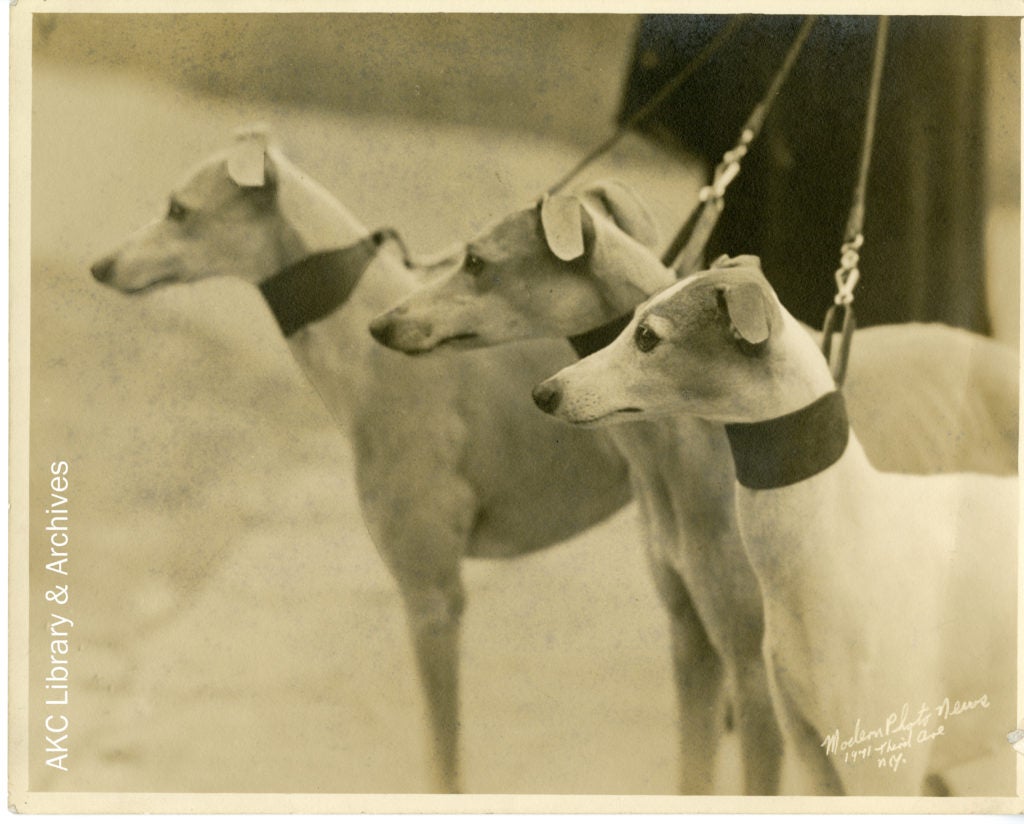
Two Whippet-Loving Sisters
Even more enmeshed in the horse scene were fellow Virginians Julia and Judith Shearer of the famous Meander kennel, which they founded in 1928. The two sisters were not only influential in creating what used to be called the “American-style” Whippet, but they also were extremely successful breeding and racing thoroughbred horses, which predated the dogs by at least a decade.
The Shearer sisters lived in an 18th-Century mansion in Locust Dale, Virginia, owned and maintained by their attorney-father, the gentle outlines of the Blue Ridge Mountains visible in the distance. The former plantation was a kind of sanctuary for the rather reclusive sisters, who lived there until their deaths in the early 1970s. There, they also bred Corgis and Beagles, maintained their own pack of Foxhounds, and raised prize Aberdeen Angus cattle and hogs. But it was their Whippets and their racehorses for which they were best known.
From the Horse Track to the Show Ring
Of the two, Julia Shearer was most involved in equine pursuits, though both sisters were judges at horse as well as dog shows. (Though they preferred to accept assignments close to home, Julia did venture across the pond to judge Whippets in England.) Racing records show that her Virginia bloodstock horses were as successful on the racing track as the Meander Whippets were in the dog show ring.
“As I write, details just to hand from [the Shearers] tell me that one of the yearlings they bred and sold in 1958 developed into one of the best two-year-olds in the United States,” wrote Charles Henry Douglas Todd in “The Popular Whippet,” published in 1961. “He won six races, five of them Stakes, and was second three times, twice in Stakes, and won over 181,000 dollars.”
That unnamed Meander horse apparently wasn’t a fluke. Another horse bred by Julia Shearer called Umbrella Fella won several high-profile races as a 2-year-old in the mid-1960s, including the Joliet Stakes, the Kentucky Jockey Club Stakes, the Breeders’ Futurity Stakes, and the Arch Ward Stakes. His career earnings were close to $240,000 – almost $2 million in today’s dollars.
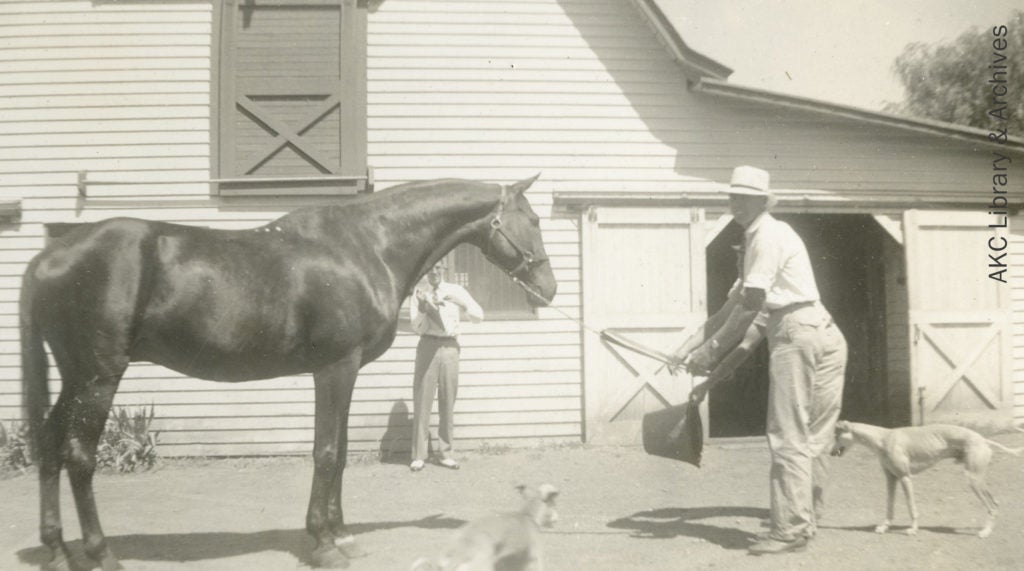
Making Their Name in the Whippet World
The Meanders sisters began in Whippets with their acquisition of the rather inelegantly named Milk of Magnesia. But a successful breeding pair later put them on the map: The female was Ch. Syndicate, whose English-bred mother was Ch. Towyside Teasle, the first Best in Show-winning Whippet in America. The male, an import from the United Kingdom named Sandbrilliant, was Best of Breed at the first-ever American Whippet Club specialty in 1931. The sisters added their kennel imprimatur to both dogs by tacking “of Meander” to each of their registered names.
The union of Syndicate and Sandbrilliant was not only sibilant – just say their names aloud – but also hugely successful, resulting in an impressive 15 champions. The most memorable and influential of them was without question Ch. Mica of Meander, who was used as the template for the American Kennel Club Whippet standard when it was revised in 1944.
In his history of the Shearers for the American Whippet Club, breed expert and author Bo Bengtson notes that the sisters had bailed the club out of financial difficulties during the Depression, “and from that point virtually ‘owned’ the club until after the war.” Mica was emblematic of their preference for a taller, leggier Whippet, which gave their dogs an advantage among the more restrained English-style dogs that had predominated in rings up until then.
What Made a Meander Whippet?
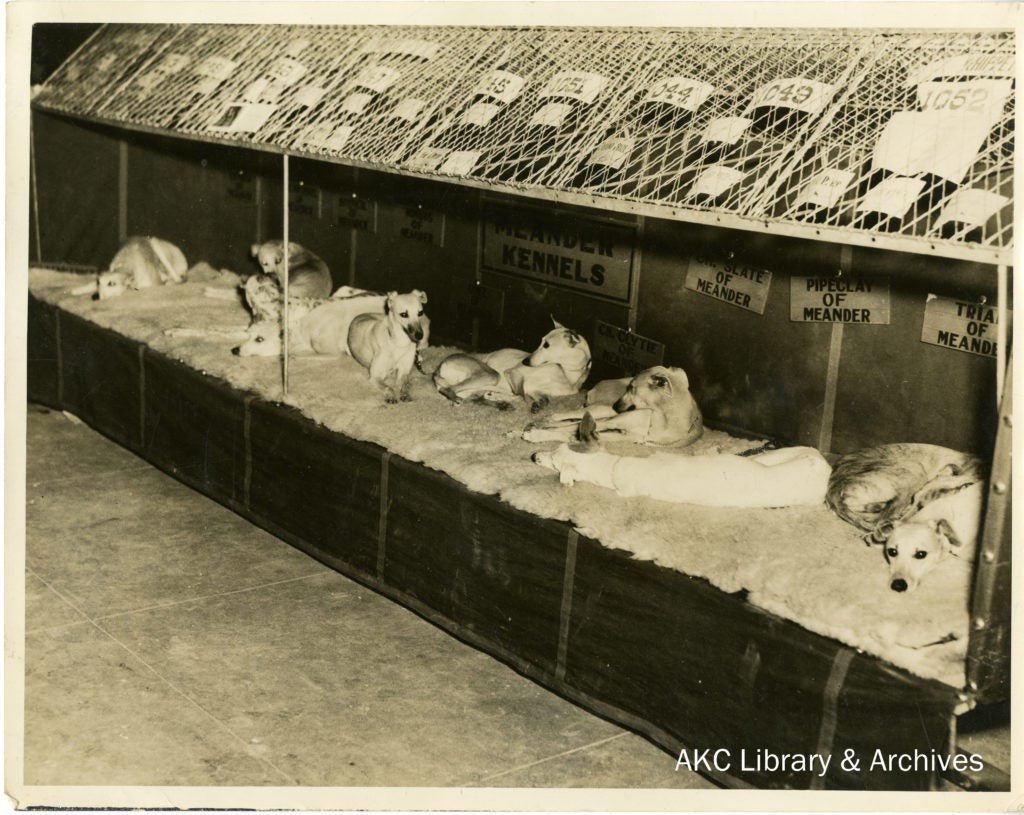
“Most Meander Whippets were true English-type Greyhounds in miniature, covering much ground with a moderate well-muscled arch over the loin,” explains Louis Pegram in “The Complete Whippet,” published in 1976, adding that the sisters preferred dark eyes and solid colors such as yellow, red and fawn.
“Heads were typically Greyhound in appearance with great length of muzzle and strength of bite. Feet were well-knuckled and good length of leg, strong pasterns, and rear angulation giving the appearance of strength and drive. Virtually all had long, free reach from the shoulder, with hackney gait the rare exception.”
Size was another differentiator for Meander Whippets.
“The Shearers liked big dogs – with them, it was ‘the bigger, the better,’” remembered the late Whippet breeder and judge Doris Wear, whose equally famous Stoney Meadows kennel was based on Meander dogs, as were other influential kennels of the 1960s and ’70s, including Eyleland, Lazeland, and Whipoo. “They were very giraffe-y dogs.”
Inevitably, Meander’s stranglehold on the breed loosened with the arrival of the Mardormere kennel on Long Island in the 1940s: Refined and elegant compared to the Meander dogs, with better rear quarters, the Mardormere line nonetheless had the same advantage as its Virginia counterpart: Both the Shearers and Marjorie Anderson of Mardormere had the financial resources to produce both great quantity and quality, selecting only the very best Whippets to show and breed.
Who Needs Marriage?
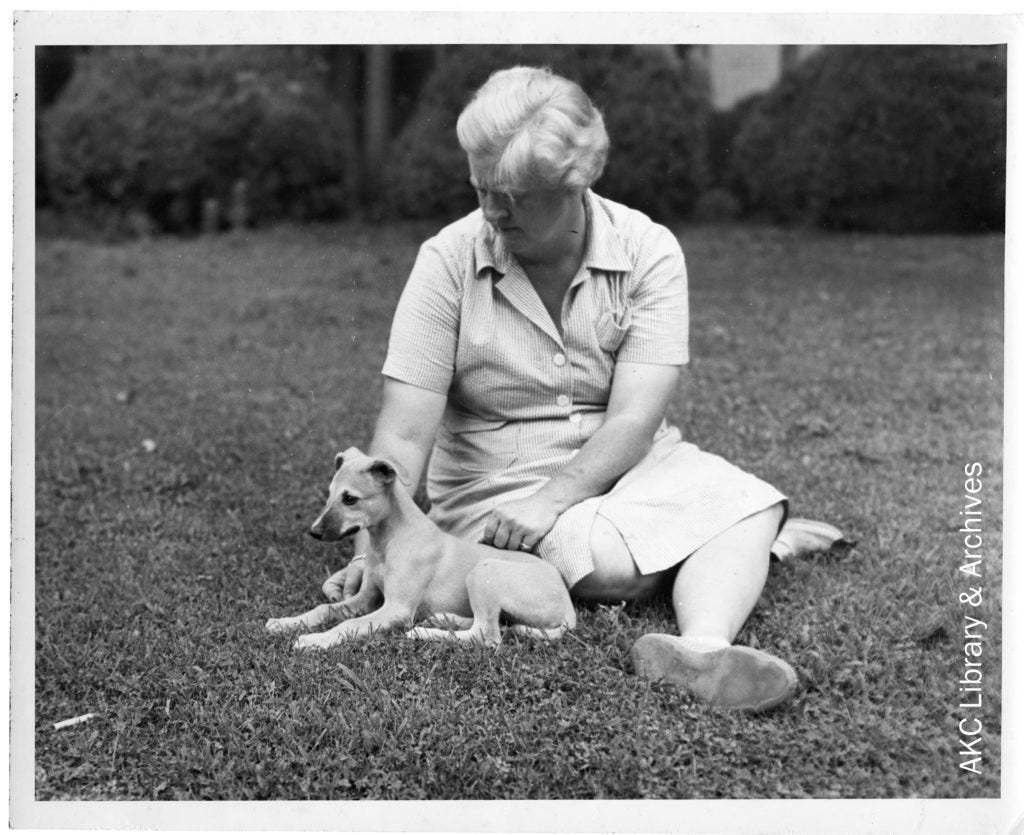
Even as the dog world changed around them, the Shearer sisters stuck with their Whippets – and with each other. Retired handler and well-known Basenji breeder Damara Bolté of Leesburg, Virginia, remembers that Julia, the more attractive of the two, had received a marriage proposal, but had countered that she and her sister were a package deal; presumably, in light of those non-negotiable terms, the prospective fiancé reconsidered.
The sisters went on to live a life that was for, with, and about their dogs: In the four-plus decades until their deaths in 1973, Julia and Judith Shearer produced more than 150 Whippet litters and more than 50 champions, with their last top winner the influential stud dog Ch. Meander Bob White. Bolté recalls the rope in the parlor that ran from an armchair up to the ceiling, across the room, and then down to a guillotine door that connected to the kennel. When the Shearers wanted to visit with some of their Whippets, they needed only to tug the rope, lift the door, and admit them.
The Meander Plantation Today
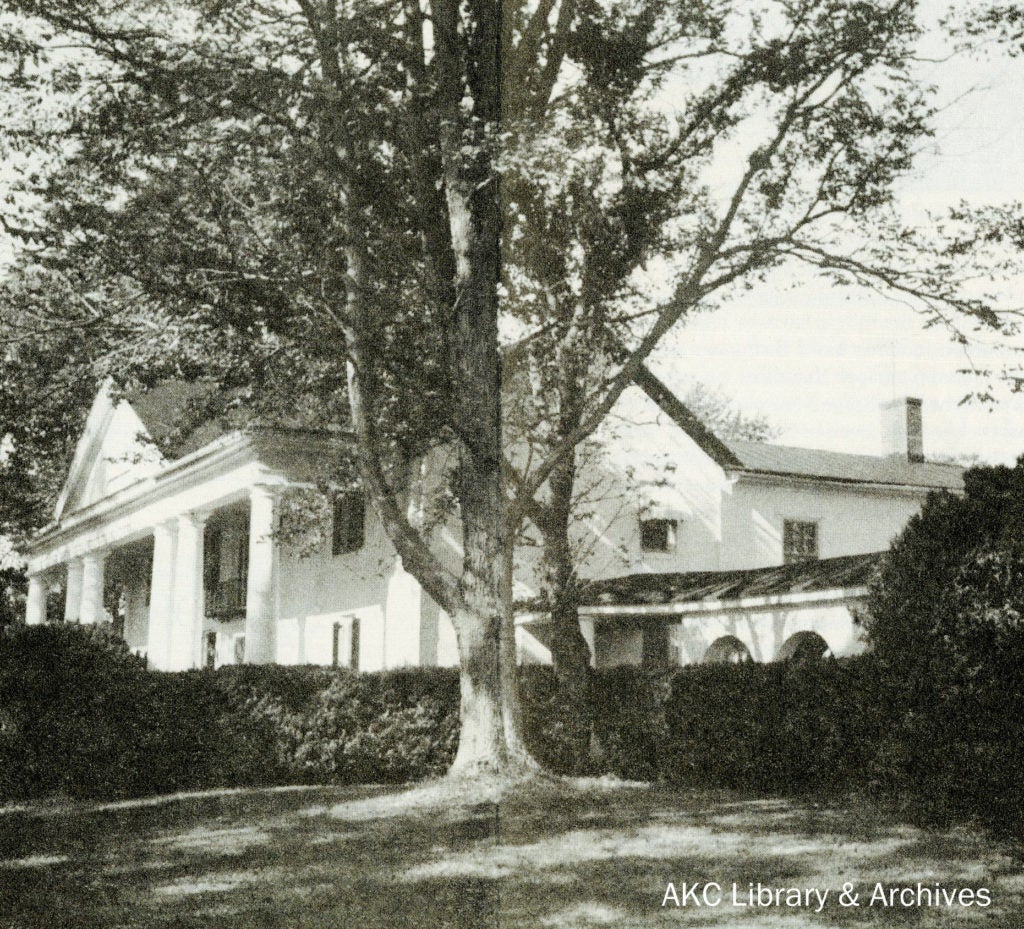
Today, the big white house where so much Whippet history was made is a country hotel called The Inn at Meander Plantation. The many historical figures who slept or at least visited there – including George Washington, Thomas Jefferson, and General Lafayette – have accommodations named after them, as do the Whippet-loving sisters: The two-room Shearer suite is dedicated to the memory of their “taste and refinement.”
Interested in more AKC history? Read about Sunny Shay and her Afghan Hounds. Or visit the page for the AKC Library & Archives which holds the Meander Kennels photo album from which all of these images were excerpted.

